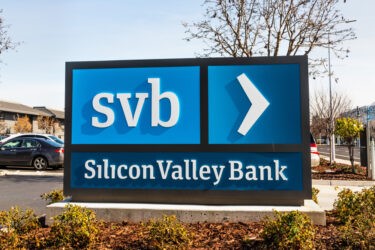78 Basic Accounting Terms and Concepts
Money rules the world. From Fortune 500 companies to the dollar bills in your wallet, money is what makes the world go round. Although many people lack a basic understanding of money. That’s why we put together this list of basic accounting terms and concepts.
After reading through these terms, you’ll have a better understanding of the money world. Whether it’s to understand your bank statements or to help you get involved in the business world, these basic accounting terms will help you get a foot or two in the door.
- Accounting – Accounting is a process of recording, summarizing and communicating financial information. It provides means for recording transactions, keeping financial records, performing audits, reporting and analyzing information for management, and helping with taxes.
- Accounting Period – The span of time covered by the financial statements is the accounting period. It defines the time frame of transactions included in financial statements. For internal accounts, this could be monthly or quarterly. For external accounts, the accounting period is usually 12 months.
- Accounts Payable (AP) – The simple definition for AP is unpaid bills. These accounts hold a balance due for rent, salaries, funds owed to suppliers and any other accounts where money is owed. These are liabilities.
- Accounts Receivable (AR) – Unpaid bills owed to you. These accounts represent sales made but not paid for by consumers. It is shown on a balance sheet as a current asset.
- Accrual Basis Accounting – This accounting system is based on the accrual principle. Revenue is recognized and recorded when it’s earned, and expenses are recognized and recorded when incurred. These entries are made whether or not cash is received or paid.
- Accrued Expenses – Any expenses that are incurred but not paid for in an accounting period. They are listed on the balance sheet as current liabilities.
- Accrued Revenue – Revenue earned during the current accounting period that hasn’t yet been collected. This can also be referred to as “unrealized revenue.”
- Amortization – The gradual decrease of value of an intangible asset over the span of its estimated useful life.
- Allocation – The authorization to incur expenses or liabilities for a specific amount and in a particular time period.
- Asset Classes – A category or grouping of investments. Some examples are equities, fixed income (e.g., bonds), and real estate.
- Assets – An entity’s property that was acquired or purchased and has value. This can be physical (cash, inventory), a claim (accounts receivable), a right (copyright, patent) or an assumption (goodwill).
- Audit – An examination and evaluation of an organization’s financial records and statements to inspect and verify transaction accuracy.
- Bad Debt Expense – A cost that is recognized when an entity is unable to collect a receivable due to a customer being unable to pay.
- Balance sheet – A statement showing an entity’s financial position by reporting on assets, liabilities and shareholders’ equity on a specific date (commonly at the end of an accounting period). It shows what a company owns and owes, as well as shareholders’ ownership.
- Bonds – Loans given from an investor to a borrower with promises to pay a specified amount on a given date or when a certain condition is met. In addition to the loan amount due from the borrower, interest payments are usually included in the bond details.
- Business Entity – An established organization involved in commercial, professional or industrial activities, and can be for-profit or nonprofit.
- Capital – A broad term that covers a wide range of financial assets such as cash, stock, manufacturing equipment, buildings, etc.
- Cash Basis Accounting – A method where income and expenses are recorded only with the payment of cash to the business or from the business. Though not the best method for accurate records, it’s a simple practice suitable for small businesses with mainly cash transactions.
- Cash Flow – The amount of money transferred in and out of an entity, representing the organization’s activities.
- Cash Flow Statement – A summary of the entity’s cash flow over a specific accounting period.
- Certified Public Accountant (CPA) – Professionals certified by the American Institute of Certified Public Accountants after passing the CPA examination and fulfilling all required education and work experience.
- Closing Entry – A journal entry made at the end of an accounting period to zero out temporary accounts and shift their balances to permanent accounts. These temporary accounts can be revenue, expenses and dividends, all of which can be closed out at the end of the fiscal year.
- Corporation – An entity that meets certain legal requirements to be separate from its owners who share in both losses and profits produced by the business’ operations.
- Cost of Goods Sold (COGS) – The amount of direct material, direct labor and overhead used to produce goods sold by a business.
- Credit – A journal entry with the ability to decrease an asset or expense but increase capital, liability or revenue. When using double-entry bookkeeping, these entries are recorded on the right-hand side.
- Current Assets – A company’s assets used in normal business operations and expected to be sold or used for less than one year.
- Debit – A journal entry with the ability to increase an asset or expense but decrease capital, liability or revenue. When using double-entry bookkeeping, these entries are recorded on the left-hand side.
- Depreciation (straight-line, double-declining balance, sum-of-years digits) – The gradual decrease of value of a tangible asset over the span of its estimated useful life.
- Straight-line is calculated by subtracting the salvage value from the asset’s cost and dividing it by the number of years estimated for its useful life.
- Double-declining balance is a method that accelerates the depreciation expense of an asset; the estimated cost is twice the amount calculated by straight-line.
- Sum-of-years digits is another accelerated depreciation method that applies a percentage of depreciation based on the number of years left in the asset’s useful life.
- Depreciation Schedule – A breakdown of the depreciation expense calculated and allocated over the span of an asset’s useful life.
- Diversification – The practice of entering funds or company activity into a variety of investments or markets, such as technology, real estate, etc. This can lower risk and allow for higher long-term returns.
- Dividends – The distribution of after-tax profit of an entity paid to shareholders depending on the class and number of shares held.
- Enrolled Agent – A tax professional authorized and licensed by the U.S. government to represent taxpayers in matters against the Internal Revenue Service (IRS).
- Equity and Owner’s Equity – The amount of money that, if all assets were liquidated and all debt was paid off, would be returned to a company’s shareholders.
- Expense – An incurred cost or money spent in an organization’s efforts to generate income or maintain its business.
- External Audit – An audit performed by an independent (external) accountant.
- Financial Accounting – A branch of accounting focusing on keeping record of all financial transactions of an organization to measure economic performance and the organization’s financial position. Financial accounting is responsible for summarizing and preparing all financial reports.
- Financial Statement – A report summarizing the written financial records to show the company’s financial performance and position. There are three statements that make up the financial statement: balance sheet, income statement and cash flow statement.
- Fiscal Year – Also known as a financial year, a time period consisting of 12 consecutive months at the end of which books are closed, profit or loss is calculated, and financial reports are prepared and filed.
- Fixed Asset – A long-term piece of equipment or property owned and used in operations to help generate revenue. This can be property, equipment, buildings or other similar items.
- Fixed Cost or Expense – A cost that doesn’t change with the increase or decrease of goods or services produced or sold.
- Forecasting – The analysis of data trends from the past and present to predict and determine the uncertain future. These estimates affect important financial decisions.
- General Ledger – The records of accounting information to organize and summarize all financial transactions. It provides all data for financial statements of the organization.
- Generally Accepted Accounting Principles (GAAP) – Methods, rules and practices to provide guidelines and procedures, as well as objective standards for financial data and statements.
- Goodwill – An intangible, long-term asset from the acquisition of one company by another. Goodwill is the excess amount paid over the net worth of the acquired company.
- Gross Margin – Gross income represented as a percentage of net sales.
- Gross Profit – Revenue minus the cost of producing goods or the services sold.
- Income Statement – A summary of a business’ performance determined by the organization’s profitability over a period of time. Also known as the profit and loss statement.
- Individual Retirement Account (IRA) – A tax-advantaged investing tool used to mark funds for retirement savings.
- Insolvency – Liabilities outweigh assets, and debt can’t be paid off.
- Interest – The charged fee for borrowing money, often a percentage of the amount borrowed. An increase or excess from the amount expected or due.
- Internal Audit – An audit performed by an entity’s own accountants.
- Inventory – A catalog of goods for merchandise to support production, or for activities such as maintenance.
- Investor – A person or entity who allocates capital with the expectation of receiving future financial returns.
- Journal Entry – The recording of financial information related to transactions of the business or organization. This provides an audit trail to look back at and analyze to determine the financial position of an entity.
- Liabilities (current and long-term) – Often referring to money, but also a service, that is owed but not paid.
- Limited Liability Company (LLC) – A corporate structure that’s a separate entity. It also requires the owners to report the company’s profits and losses on their personal income tax returns. However, the owners cannot be personally held liable for the company’s losses or debts.
- Liquidity – The ability for current assets to meet current liabilities, often by being converted to cash.
- Loss – When money output is greater than income or returned benefit.
- Managerial Accounting – A branch of accounting focused on providing financial and statistical information to managers for use in planning and decision-making.
- Material – Something of importance or consequence related to a subject matter that would significantly impact or affect a decision.
- Net Income (NI) – The total revenue earned in a period (e.g., fiscal year) after all expenses incurred during the same period are deducted.
- Net Margin – The percentage of revenue after operating expenses, preferred stock dividends, interest and tax are subtracted from the total revenue.
- Operation Expense – A cost that is ongoing and associated with the cost of running and maintaining a business or organization. Some examples of this are rent, insurance and property taxes.
- Overhead – An indirect expense related to the whole company or operation that doesn’t directly contribute to the end-product or service and can’t be traced to a specific unit of output.
- Partnership – An entity in which two or more individuals or parties agree to operate and manage a business together. This can be between individuals, companies, or an individual and a company.
- Payroll – Records of wages, deductions and net pay for all workers and employees.
- Present Value (PV) – The current value of a future sum of money.
- Profit and Loss Statement (P&L) – A financial statement summarizing revenues, costs and expenses incurred during a given period, such as the fiscal year.
- Return on investment (ROI) – Usually expressed as a percentage, ROI is a way to measure profitability, indicating if a company is efficiently using its resources. It is a ratio of net income to the average equity capital.
- Revenue – Income from the sale of goods or services.
- Salvage Value – The estimated book value of a depreciable asset at the end of its expected useful life.
- Shareholder – Any person, company or organization that owns one or more shares of a company.
- Sole Proprietorship – The simplest and most common form of business ownership, a sole proprietorship is owned by an individual, and the individual is responsible for all debts of the business. It is not a separate entity from the owner.
- Trade Discount – An amount or rate reduced from the retail price of an item that is agreed upon when sold to a reseller. This can vary depending on quantity purchased.
- Transaction – Any event affecting the finances of a business (i.e., asset, liability or net worth accounts).
- Trial Balance – The sum of all credit and debit balances at the end of an accounting period and/or fiscal year before closing entries are made. For the trial balance to be correct, debit and credits must be equal.
- Useful Life – The period of time an asset is estimated to be usable for the purpose it was acquired.
- Variable Cost – This cost is periodic and varies depending on the level of output or sales of a company. These costs can include labor, raw material, distribution costs and more.
If you want to learn more basic accounting terms and about investing, check out our Financial Literacy page. You can also sign up below for our free e-letter. It’s packed with investing information.
About Amber Deter
Amber Deter has researched and written about initial public offerings (IPOs) over the last few years. After starting her college career studying accounting and business, Amber decided to focus on her love of writing. Now she’s able to bring that experience to Investment U readers by providing in-depth research on IPO and investing opportunities.





